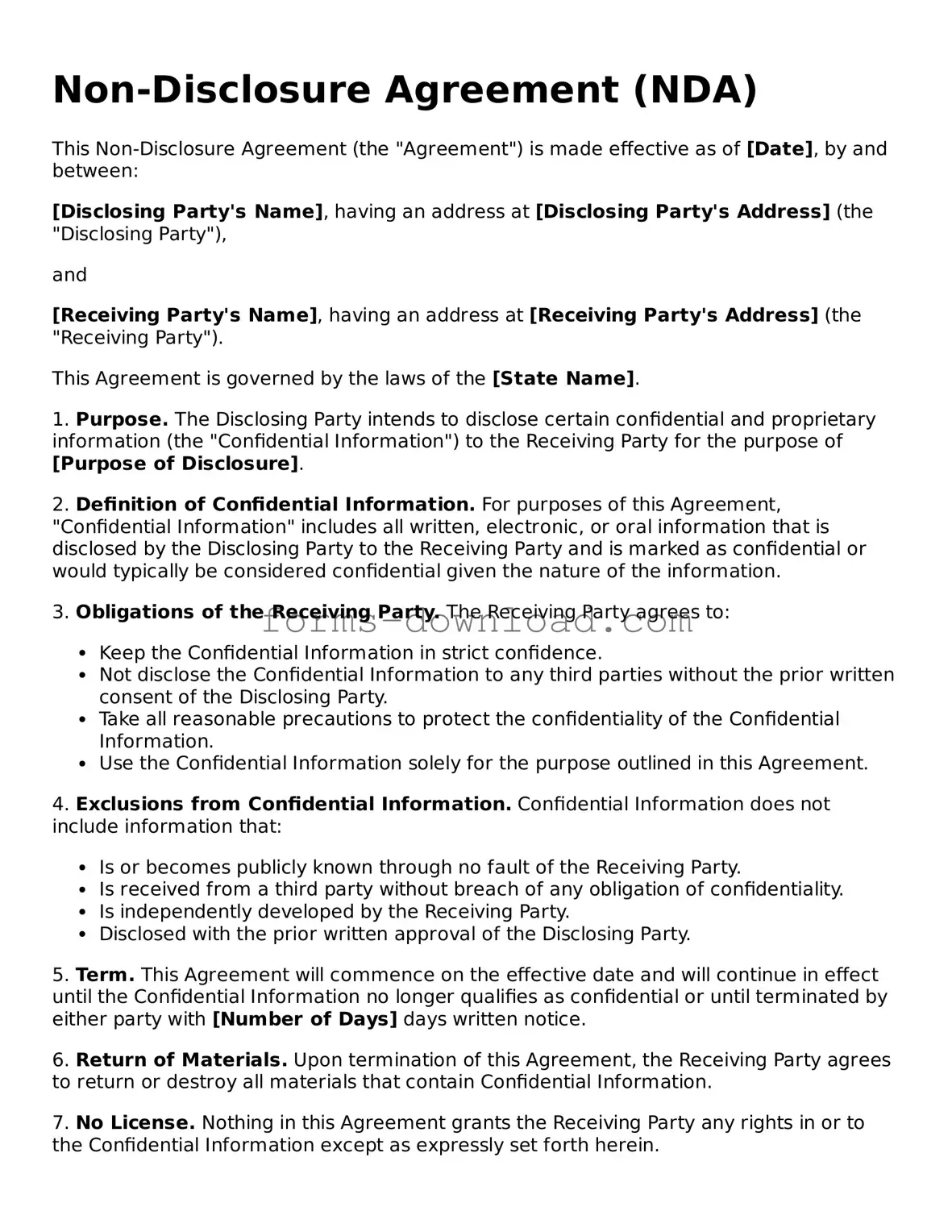Non-Disclosure Agreement (NDA)
This Non-Disclosure Agreement (the "Agreement") is made effective as of [Date], by and between:
[Disclosing Party's Name], having an address at [Disclosing Party's Address] (the "Disclosing Party"),
and
[Receiving Party's Name], having an address at [Receiving Party's Address] (the "Receiving Party").
This Agreement is governed by the laws of the [State Name].
1. Purpose. The Disclosing Party intends to disclose certain confidential and proprietary information (the "Confidential Information") to the Receiving Party for the purpose of [Purpose of Disclosure].
2. Definition of Confidential Information. For purposes of this Agreement, "Confidential Information" includes all written, electronic, or oral information that is disclosed by the Disclosing Party to the Receiving Party and is marked as confidential or would typically be considered confidential given the nature of the information.
3. Obligations of the Receiving Party. The Receiving Party agrees to:
- Keep the Confidential Information in strict confidence.
- Not disclose the Confidential Information to any third parties without the prior written consent of the Disclosing Party.
- Take all reasonable precautions to protect the confidentiality of the Confidential Information.
- Use the Confidential Information solely for the purpose outlined in this Agreement.
4. Exclusions from Confidential Information. Confidential Information does not include information that:
- Is or becomes publicly known through no fault of the Receiving Party.
- Is received from a third party without breach of any obligation of confidentiality.
- Is independently developed by the Receiving Party.
- Disclosed with the prior written approval of the Disclosing Party.
5. Term. This Agreement will commence on the effective date and will continue in effect until the Confidential Information no longer qualifies as confidential or until terminated by either party with [Number of Days] days written notice.
6. Return of Materials. Upon termination of this Agreement, the Receiving Party agrees to return or destroy all materials that contain Confidential Information.
7. No License. Nothing in this Agreement grants the Receiving Party any rights in or to the Confidential Information except as expressly set forth herein.
IN WITNESS WHEREOF, the parties hereto have executed this Non-Disclosure Agreement as of the date first above written.
___________________________
[Disclosing Party's Name]
Disclosing Party
___________________________
[Receiving Party's Name]
Receiving Party
